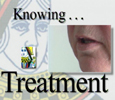

PAST PROJECTS
BIG Healthy Life
New Marijuana
Hikers, Bikers & Automobiles: Pedestrian & Cyclist Safety
I Am New Mexico Public Schools
PREGNANT: Teen Pregnancy Prevention
Everyone's Business: Protecting Our Children
NET-IQUETTE
NET-IQUETTE
DRIVEN to DISTRACTION
SEA of CHANGE
Bystanders Ending BULLYING
NO EXCEPTIONS, Pain Killer Addiction
DOMENICI, National Leadership
SMASHED: Youth, Brains and Alcohol
CODY - The First Step, Paralysis Issues
Looking In, Homelessness
Date Violence, Dating Issues
Not In My Family, Mental Health Stigma
Coming Back, Youth Suicide
See Mommy Cry, Domestic Violence
Healing the Earth, Global Warming
High, Kids and Drugs
Knowing When to Stop, Gambling Addiction
Risk, Adolescent Brains
Past Projects
Awards:
Rocky Mountain Emmy Award Documentary NATAS
Rocky Mountain Emmy Nominee Writing NATASResources:
Script | Order DVD's | Discussion Guide
HIGH
New Mexico has one of the highest drug related death rates in the nation. Over 30% of New Mexico students have been offered drugs at school. This project includes a 30 minute documentary, a 20 minute version as well as a viewer guide for classrooms and organizations to explore the reasons, dangers and answers to drug problems.
The viewer will learn about the extent and effect of drugs on our kids as highlighted by statistics and true stories. It is an opportunity for youth and their parents to come together and discuss solutions to this issue. 
Experts include a medical doctor who performs an autopsy and speaks very clinically about what happens to specific organs of the body when drugs are introduced. This autopsy, while real, is filmed so as not to shock the audience or show things that will make people uncomfortable. The doctor discusses why prescription drugs are particularly dangerous, when used illegally and not for the person whom the drug is prescribed. He also explains why some drugs make the person feel "good" but what actually happens inside the body and its ultimate bad effect. 
Also included are interviews with school counselors, parents, and youth about what is happening with drugs and kids. We hear from youth who have had experiences with drugs and from police experts about how to identify what drug a person is on so parents can recognize if their child is high. Additionally, a brain research expert and a youth psychologist talk about the developing young brain and how drug use during adolescents can affect the brain permanently.
Awards:
Rocky Mountain Emmy Nominee Documentary NATASResources:
Clip
 KNOWING WHEN TO STOP
KNOWING WHEN TO STOP
A 30 minute documentary examining gambling addiction. The program was based in a therapy room with three gambling addicts talking to their counselor.
As gaming and casinos become more important to the economic prosperity of Native Americans and surrounding communities, addressing the issue of problem gambling, or gambling addiction, has increased in its importance. This documentary along with a series of training tapes is being used to educate casinos and the public at large about recognizing and treating problem gamblers.
Resources:
![]() Clip | Script | Order DVD's | Viewer Guide | SafeTeen.net
Clip | Script | Order DVD's | Viewer Guide | SafeTeen.net
RISK / Why kids take dangerous risks
Over the past decade, research has indicated that human brains continue to grow well into the mid 20s. As a result, several of the key areas of the brain that help control impulsive behavior are not fully developed during adolescence. This is a key when teens are faced with decisions that could have extremely dangerous and life changing consequences. This is why parents and youth need to understand and have specific tools to help counter some of the RISK.
"RISK" is a comprehensive media campaign to help PARENTS, EDUCATORS and HIGH SCHOOL STUDENTS throughout New Mexico understand youth brain development, particularly during adolescence. It gives parents tools to use with their children and give students tools to help them make healthy decisions. This campaign utilizes a variety of media to reach parents and youth with the information necessary to help keep kids safe.
The project involves parents, teens and brain experts extensively in the creative process and centers on the production of a 30 minute documentary along with a 30 minute live community conversation phone in program that will be broadcast in fall of 2009 just as school is beginning. It also includes a series of television informational promos, a shortened version of the documentary for public talks and a viewer guide about the issue.
{home} {contact info} {our company} {our people} {coming up next} {projects}
{video library} {training} {international} {SafeTeen} {media consulting} {awards}
Copyright © Christopher Productions LLC, 2002-2012. All rights reserved.
Get your Free Flash Player
![]()


